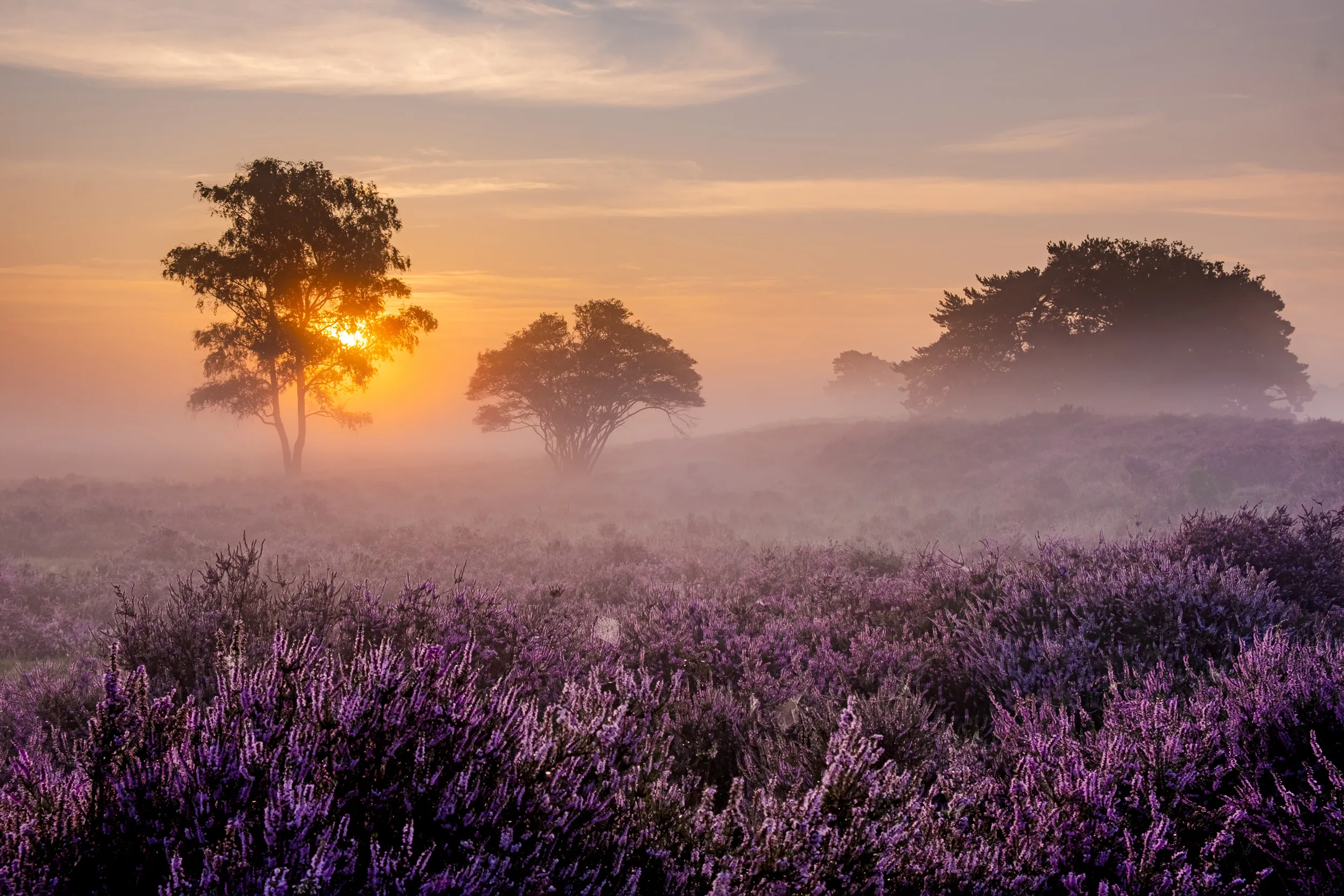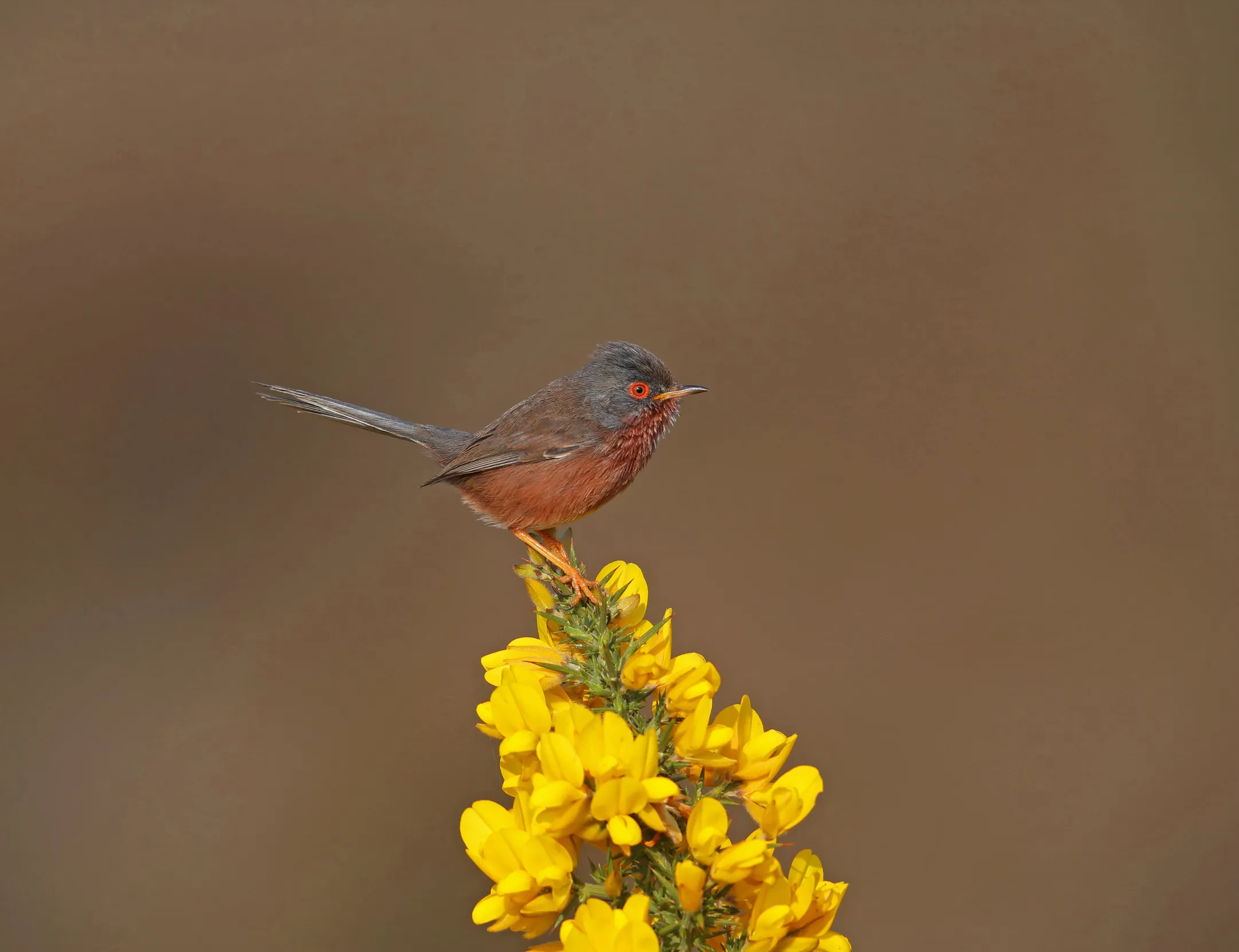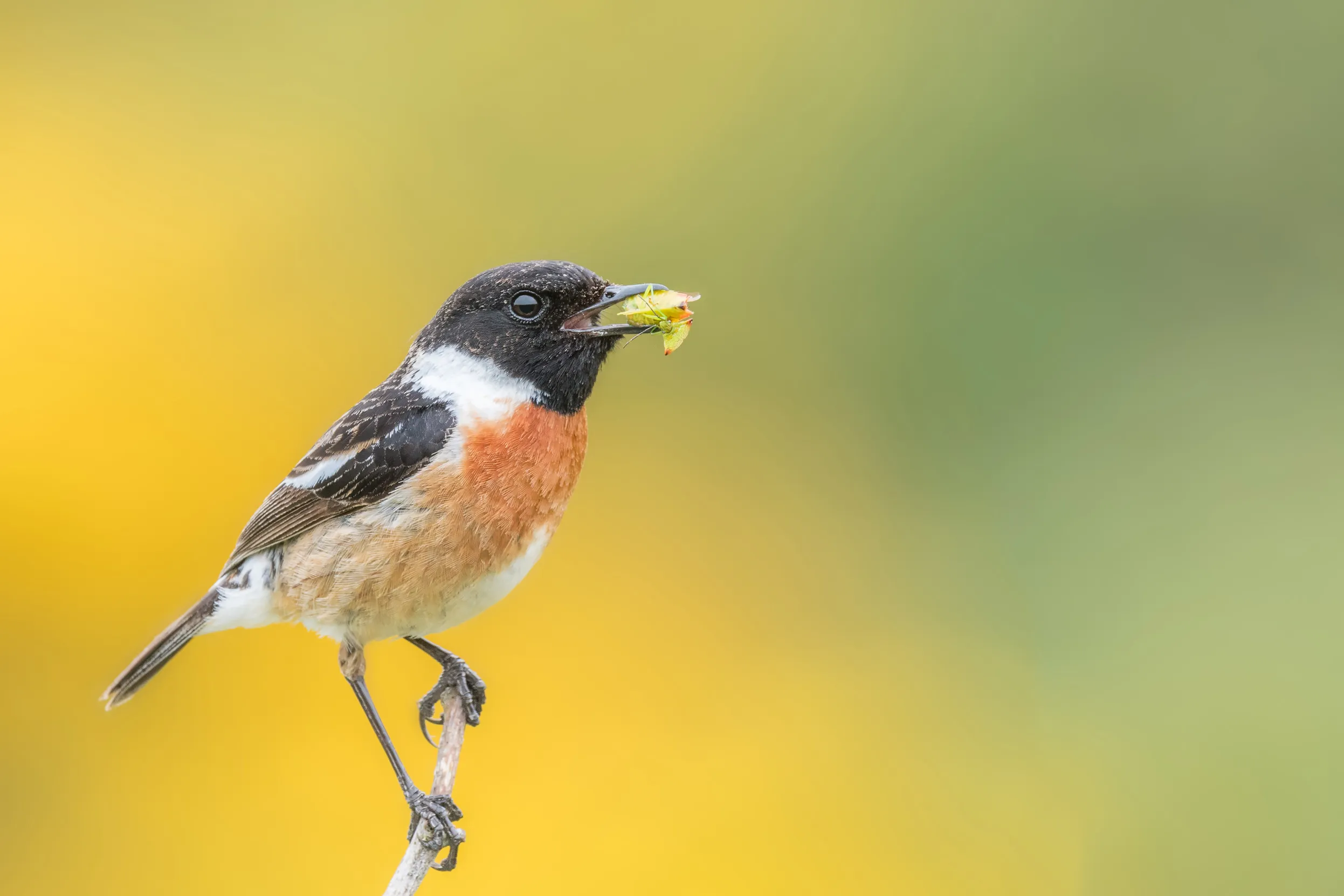News
What were the outcomes for nature at COP29?
The RSPB attended COP29 to ensure nature was on the agenda throughout global climate negotiations.
Two hundred years ago, heathland was common throughout the UK but now less than 15% of this habitat remains, making it rarer than rainforest. Discover some of the special wildlife that lives there and some of the best heathland nature reserves to visit.

Despite their rather windswept and wild demeanour, the UK’s rolling lowland heathland landscapes are far from being a true wilderness. Thousands of years of human interaction helped create and shape these precious habitats into the wildlife-rich places that we know today. For many rare species of birds, insects, plants and animals they provide an essential and much-needed home.
Activities such as tree-clearing for fuel, along with livestock grazing over many generations ensured that these often remote areas remained open to the elements and as a result were dominated by low-growing hardy vegetation, such as heathers and gorse. These plants thrive in places with poor, often acidic soils which are low in nutrients, and so create a distinctive and eye-catching environment. Some heaths are excessively dry while others are characterised by moisture and can remain wet and boggy due to lack of drainage.
One thing that all heaths have in common is their scarcity. Over the years their ‘value’ to people has shifted and many areas of former heathland have been converted into farmland or destroyed for housing while others have become covered in both natural woodland or commercial forestry. Thankfully most of the remaining heathland in the UK is now protected but sadly there are other pressures facing these vital spaces such as excessive recreational disturbance, wildfires, air pollution and ineffectual management.
Some of our rarest species can only be found on our heaths and their very survival is dependent upon us keeping these places both protected and well-managed.
You can find a variety of heathlands on RSPB reserves across the UK but for many nature lovers some of the finest are those found in such counties as Suffolk, Surrey, Devon and Dorset.
With a slate-grey back and deep red breast, this small, long-tailed warbler is a true specialist of gorse-covered heaths. These year-round residents are susceptible to harsh weather but recent years have seen their numbers increase, thanks to habitat restoration and a succession of milder winters.

The curious Nightjar’s unusual chirring song is a classic night-time sound of our heathlands. These summer visitors spend the day hidden away thanks to their cryptic camouflage, emerging at dusk to hunt for moths and other flying insects.

While they may not have picture-postcard looks, these dapper little denizens of heathlands are always a treat to see and hear. They are rather secretive and easily overlooked but when seen in flight, their distinct short-tail and rounded wings are characteristic.

Rather Robin-like in shape and size, stonechats are common on heathlands and moors across many parts of the UK. Often seen sat on top of a bush, the striking males are unmistakable with their black head, smart white collar and tomato-soup coloured breast. The females too are noticeable with their soft-sherbet orange breasts, and streaky brown back and head.

In bright sunny weather during spring and summer, look out for the metallic sheen of the Green Tiger Beetle on patches of bare ground. Up to just 1.5cm in length, these ground beetles are fast hunters with relatively long legs and strong jaws that prey on invertebrates such as ants and spiders.

On the wing in June and August, Silver-studded Blue butterflies are rare heathland specialists. The silver studs refer to the light-blue studs found on the underside of the wing. While males have mainly blue upperwings, females are brown.

Birds such as Nightjars and Dartford Warblers build their nests under or around the heathlands dense vegetation. As well as making them difficult to see, it also makes them vulnerable to disturbance. To keep wildlife safe, please stick to marked paths, and, if dogs are permitted, please keep them on leads.